#green pittosporum
Text

#flowers#flower arrangement#vase arrangements#gerbera daisy#daisy#poms#roses#carnations#limonium#caspia#statice#pittosporum#pink#purple#yellow#green
2 notes
·
View notes
Photo
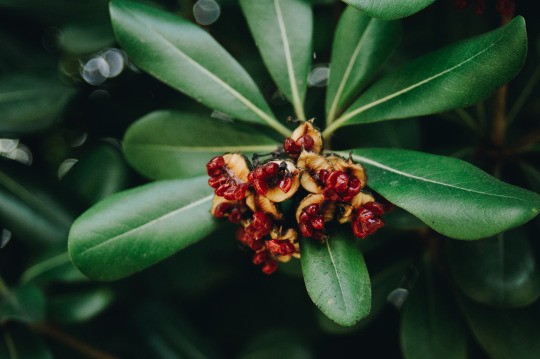
Pittosporum Senacia
Nikon D90
#berries#photography#photographers on tumblr#plants#plant photography#high contrast#red#green#pittosporum
2 notes
·
View notes
Note
What kind of flowers would you put together for Kulîlk's bouquet? What would those flowers mean? Are any of them a favorite?
Ohhhh you've done it now anon, you're unleashing my love for flowers on poor innocents.
If Kulîlk were to have a bouquet, it would reflect her personality. The bouquet would consist of honeysuckle flowers, symbolizing her happiness and love, light pink alstroemeria, representing her kind and playful nature, and the main flower would be peonies, signifying the good fortune she's had in surviving as Crown and the prosperity she will bring in the future.
To truly make the bouquet fit her vibe, I'd probably include dusty shades of green with sprigs of variegated pittosporum and eucalyptus.
#my oc#oc#kulîlk teyran#flowers and their meanings change over time but for the sake of this ask I'm just using my own interpretation to build ontop of it
0 notes
Text
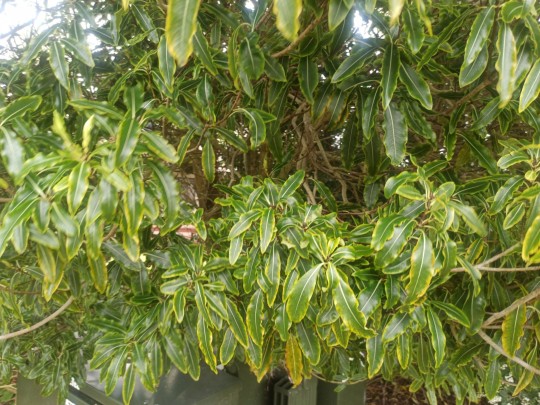


Lemonwood, a species of Cheesewoods
Also known as:
• Tarata
•Lemonwood tree
Botanical name: Pittosporum eugenioides
Pittosporum eugenioides, also known as lemonwood, is an evergreen tree native to New Zealand. Its yellow-green leaves have a strong lemony aroma when crushed, and its yellow blossoms are very fragrant.
4-8 Northcross Drive, Oteha, Auckland 0632
7PJC+6XP Auckland
-36.7194000, 174.7224440
0 notes
Text
Jack knotes

Top notes: Bergamot, Verbena, Caraway, Pink Pepper, Violet The notes all come together to create a fresh fragrance that’s known among wearers worldwide as the perfect dupe to Tom Ford’s Neroli Portofino. Finally, the note ends with just a touch of Angelica, with its strength exuding a herbal, citrusy scent. The base note begins with Amber bringing a warm, powdery aura to mix with the sweet muskiness of the ambrette seed. Finally, the note ends with Pittosporum, known as the mock orange with its sweet and heady fragrance. It’s followed by the flora, almost animallic airs of the African orange blossom and the rich, sensual musk of jasmine. True to its name, the fragrance contains Neroli in its middle note, a honey-like scent with a touch of spice extracted from the blossom of the bitter orange. Complementing the forage is none other than the bitter orange, ending the note just as it started. This freshness is added to by the soothing floral notes of mandarin and lavender, followed by the green of myrtle and rosemary. It starts on a citrusy note, with the complex combination of sweet, sour and bitter coming from the bergamot, and the soothing air of the groves of Italy coming from the Sicilian lemon. Packaged in cool hues of blue, Neroli is a pleasant, fresh smelling perfume produced by the House of Just Jack, and is a great, versatile fragrance that can be worn day and night. Middle notes: Neroli, African Orange Blossom, Jasmine, Pittosporumīase notes: Amber, Ambrette Seed, Angelica Top notes: Italian Bergamot, Sicilian Lemon, Mandarin, Lavender, Myrtle, Rosemary, Bitter Orange Many of its wearers have also compared the scent to Tom Ford’s Tuscan Leather, and often say that it would make an ideal dupe. The layers come together to create a fragrance that is smoky with a touch of sweetness- almost mysterious in its two contrasting characteristics. Taking a darker turn, the base notes turn to two heavier scents- the black suede with its leathery musk, and the dry amberwood with its tobacco like woodiness. Then comes in the Night Blooming Jasmine, with its strong, exoticly sweet scent complemented by the tang of the raspberry. Its strong, therapeutic air mixes with the Olibanum’s spicy and zesty accords, creating a strong, unique aroma. The middle notes begin with thyme- a herb placed on the pedestal from the time of the ancient Greeks. Its honey-like touch is joined by the sugared tang of the raspberry tart, juicy and irresistible. The fragrance starts off with Saffron, the “red gold”loved by generations across continents, bringing in notes- both bitter and sweet. Vesseled in its deep brown glass casing- simple and dark, Italian Leather by Just Jack gives off the look and feel of sophistication, and, abiding by its packaging, as do its ingredients.

0 notes
Text

Kathy Lovas
Freeze
July 10 – August 13, 2022
From July 10 - August 13 Terrain Dallas will host artist Kathy Lovas’ Freeze, an installation in response to climate change. Lovas’ is a multi-disciplinary artist working in photography, sculpture, and installation. Her projects reference current and past events using familiar objects or words and she often draws on personal experiences in her narrative work.
In Freeze, Lovas has transformed the remains of several Pittosporum bushes which were lost during the February 2021 freeze into sculptural omens. Their bare limbs, painted white, recall skeletal figures and sit starkly against the backdrop of the green lawn at Terrain Dallas. The skeletal forms are situated amongst other familiar yard objects in the installation including a ceramic sun and moon with human features. These objects stand in silence over the ghostly sculptures, adding a layer of warning within the guise of whimsical yard art.
Normally a hardy evergreen flowering hedge adapted to the Texas growing zone, the Pittosporum skeletons highlight the fragility of organisms subjected to extreme and unusual weather resulting from global warming. Lovas’ installation turns the landscape at Terrain Dallas into a graveyard, hinting at the coming effects of climate change and serving as an early warning that without human intervention, things will only get worse.
Kathy Lovas is a photographer and visual artist based in Dallas. She holds a B.S. degree in biology from St. Mary's College, Notre Dame, Indiana and an MFA in photography from Texas Woman's University in Denton. She is a 1995 recipient of a Mid-America Arts Alliance National Endowment for the Arts Fellowship in photography, and was a 1991 fellow of the American Photography Institute National Graduate Seminar at New York University. Selected solo exhibitions of her work include Lawndale Art Center, Galveston Art Center, Women and Their Work, and Liliana Bloch Gallery, Dallas. She has been a resident artist at Project Row Houses in Houston and the Atlantic Center for the Arts in Florida. Her work has been included in numerous group exhibitions throughout Texas. Kathy's work is represented by Liliana Bloch Gallery in Dallas.
1 note
·
View note
Text
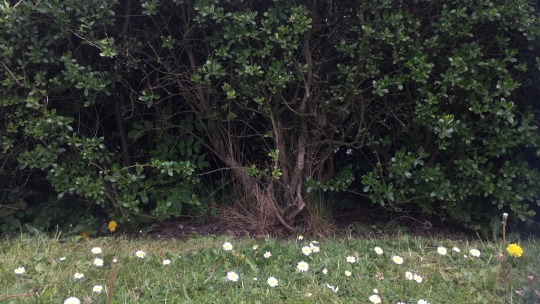
#pittosporum#bush#daisies#dandelion#grass#green#arbust#gard viu#margarete#păpădii#iarbă#verde#mobile photography#mobile phone photography#submission#mobilephotography
1 note
·
View note
Photo

Precious Orchid
Vibrant pink orchids adorn both the card and its dazzling fresh bouquet, with a fusion of cymbidium orchids, ruby santini and blue eryngium.
by flowercard
#pink cymbidium orchids#pink leucadendron#green santini#spiky eryngium#variegated pittosporum#ruscus leaves
1 note
·
View note
Photo

Birthday Bounty
Unusual, amazing, gorgeous – the ideal birthday gift! Ready to wow straight from our signature delivery box, those rich pink cymbidium orchids just burst from the frame.
by flowercard
#pink cymbidium orchids#birthday#pink leucadendron#green santini#eryngium#ruscus leaves#variegated pittosporum#flower delivery#flower card
1 note
·
View note
Text
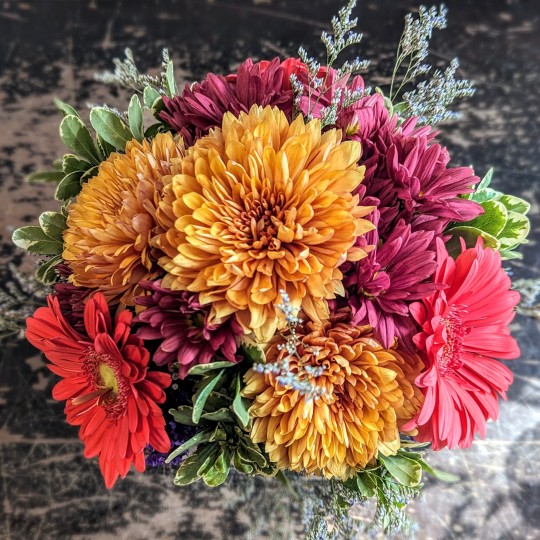

#flowers#flower arrangement#vase arrangements#pink#green#purple#orange#caspia#statis#limonium#poms#gerbera daisy#cremon#pittosporum
1 note
·
View note
Photo

A flower donut, as my bf likes to call them
#ju's flower tag#there are a billion different flowers in there let me check#rosa#chrysanthemum#calla#amimagus#hydrangea#agapanthus#germini#gypsophila#sedum#alstroemeria#there u got'em all#also#pittosporum#lentiscus#ruscus#for the greens#this donut is one meter wide though it woudl take ages to eat it#if the flowers were edible#but they're not#pls do NOT eat the flower donuts
6 notes
·
View notes
Text

#pittosporum#pitosforo#green#plant#flora#🍃#elastic band#elastico#yellow#pollute#contamination#elastic#why
0 notes
Text
Safe Aviary Plants and Toxic Plants for Birds@|what plants can i put in an outdoor aviary@|@|24
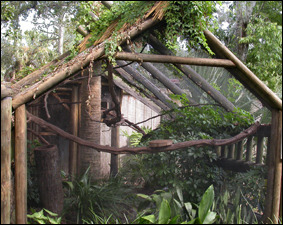
Plants not only add aesthetic value to an otherwise sterile-looking enclosure, but they also provide a more natural, engaging, and secure environment for the inhabitants to enjoy. Using plants to create visual barriers within the flight may help reduce aggression among cagemates by providing objects for the birds to hide behind.5 This in turn helps to make the birds feel more secure, and may therefore result in reduced stress levels. Foliage in the cage gives the birds something to occupy themselves with–birds often chew on, play within, and even build nests out of plants placed in their living space.
For this reason, care must be taken when selecting plants to decorate a flight. Both live and fake plants may be used, but all parts of the plant must be safe and nontoxic. The best fake plants to use are constructed of untreated silk and plastic. Make sure the silk plants do not have any components that may be easy for a bird to consume, tangle itself in, get caught on, or stuck by. Treated wood baskets and paper plants may be hazardous choices and are not recommended for decorating flights. Two benefits of using silk plants are: 1) they are not as easily destroyed by the birds, and 2) they can be scrubbed clean and disinfected as needed.
[external_link_head]
Live plants tend to demand more upkeep and may need to be replaced more frequently, as finches often love to pick them apart. Try to obtain plants that have not been sprayed with any pesticides or chemicals, and be sure to rinse the plants off before placing them in and around the flight. Do not add any fertilizers to the soil (they are toxic);6 if fertilizers are already present in the soil, repot the plant with uncontaminated soil. Leaving each plant in its pot is suggested, in case a plant dies and needs to be removed.
Helpful Hints41
Placement
Plantings should be spaced appropriately to allow room for flight paths and to permit the birds to access to the floor of the enclosure. Walk-in enclosures should also have planned pathways for birdkeeper access. Be careful to provide climbing vines with trellis to support the weight of their growth; otherwise they could break the aviary mesh and allow escape of the birds.
Selection
Aside from ensuring that the plant(s) you have selected are non-toxic, try to avoid purchasing plants which are tall and rapidly-growing as these will require constant pruning. In addition to considering what plants are best suited for your area, don’t forget to also consider the needs of the birds. Avadavats and Munias enjoy climbing small bamboos and grasses, for example, Munias and Mannikins prefer to weave their nests into grass clumps, and Weavers need palm leaves and broad-leafed grasses for nesting material.
Timing of Live Plantings
Plants should be added to the enclosure as it is being completed. The plants should be allowed to grow sufficiently before adding the birds; this way, the plants will be better able to withstand being nibbled on. Ideally plants should produce their densest foliage while the birds are nesting.
Safe Aviary Plants25,17
When choosing plants for your aviary, consult a botanist or experienced gardener who can help you select plants which are suitable for planting in your locale (considering your hardiness zone, soil type, sun exposure, etc.). Below are some options which have been listed as safe for birds.
Note: Please be aware that roses and bougainvillea have thorns.
Outdoor Plants
Trees & Shrubs
Acacia
Almond
Arbutus
Ash

Aspen
Autumn olive
Bayberry
Birch
Bladdernut
Blueberry
Camellia
Cottonwood
Dogwood
Elm
Fir (balsam, douglas, subalpine, white)
Forsythia
Fuchsia
Guava
Hawthorn
Larch
Madrona
Magnolia
Mango (zone 9+)
Manzanita
Mountain ash
Nectarine
Papaya (zone 10+)
Pear (as long as the seeds aren’t eaten)
Pine (ponderosa, spruce, Virginia, white)
Pittosporum (zone 9+)
Poplar
Pyracantha
Raspberry
Rose
Rubus odoratus
Spruce (black, Norway, red, white)
Viburnum
White poplar
Vines
Bougainvillea (can also be grown as shrub or small tree)
Grape vine
Russian Vine (Polygonum baldschuanicum)
[external_link offset=1]
Grasses & Herbs
Bamboo
Oregano
Rosemary
Thyme
Ground Cover and Short Plants
Baby’s tears aka Polka Dot Plant (Helxine soleirolii)
Chickweed
Creeping jenny (Lysimachia)
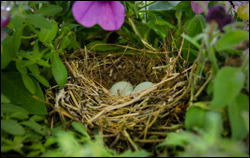
Wild passerines built a nest in a hanging petunia.
Dandelion
Marigold
Mother of pearl
Nasturtium (zone 9+)
Petunia
Piggyback begonia (Begonia hispida variant Cucullifera)
Piggyback plant
Plectranthus (zone 9+)
Sedum
Thistle
White clover
Indoor Plants (Safe Houseplants) and Tropical Plants
African violet (Saintpaulia spp., Episcia reptans)
Aluminum plant (Pilea cadierei)
Bird’s Nest Fern (Asplenium nidus)
Boston Fern (Nephrolepis exaltata)
Bloodleaf
Bromeliads
Burro’s tail
Cactus (except pencil, peyote, mescaline, candelabra)
Christmas cactus (Schlumbergera bridgesii)
Cissus: Danish ivy aka Grape Ivy (Cissus rhombifolia), Kangaroo vine (Cissus antarctica)
Emerald ripple peperomia
Flame nettle (Coleus sp.)
Gold-fish plant
Hens & chickens
Lipstick plant
Madagascar jasmine
Monkey plant
Nerve plant
Palms:

Potted palms provide privacy around the nest.
Areca (Chrysalidocarpus lutescens)
Bamboo (Chamaedorea erumpens)
Butterfly Cane
Canary Island (Phoenix canariensis)
Date
European Fan (Chamaerops humilis)
Fishtail
Golden Feather
Paradise/Kentia (Howea foresterana)
Parlor (Chamaedorea elegans)
Lady (Raphis excelsa)
Madagascar
Miniature Fan
Phoenix
Pygmy Date
Robelein Lady
Sentry
Wine
Peacock plant (Calathea)
Pepperomia (Pepperomia sp.)
Prayer plant (Maranta leuconeura)
Purple Passion aka Velvet Plant (Gynura aurantiaca)
Spider plant (Chlorophytum comosum)
Swedish ivy (Plectranthus verticillatus)
Wandering jew (Tradescantia sp.) including Giant white inch plant
Wax plant (Hoya carnosa)
Zebra plant (Aphelandra squarrosa)
Plants which Allow for Perching
Dwarf or Hawaiian Schefflera (Schefflera arboricola)
Umbrella tree/Schefflera (Brassaia actinophylla)
False aralia
Toxic Plants
Plant toxicosis in birds occurs if they chew on or ingest toxic plants. The toxic reaction can be due to pesticide residues on the plants, or to toxins within the plants themselves. Birds which chew on toxic plants may develop oral irritation; if they ingest enough, systemic clinical signs can occur such as vomiting or diarrhea. There is likely significant species differences in sensitivity,16 and studies are lacking. However, plants which have been reported as toxic in some birds, or which are considered to be potentially toxic include:6,25,52,29,56,16,17,28
Common Name Scientific Name Poisonous Part Symptoms Aconite Aconitum sp. all parts Agapanthus Agapanthus sp. sap Amaryllis Amaryllidaceae bulbs American yew Taxus canadensis needles, seeds Apple seeds Apricot pits Arrowhead vine Syngonium podophyllum leaves Arum Lily Arum sp. all parts Autumn crocus Colchicum autumnale all parts Avocado Persea americana pits, skin, flesh Reduced activity, inability to perch, fluffing feathers, labored breathing, rapid death, generalized tissue congestion. Azalea Rhododendron occidentale leaves Balsam pear Memordica charantia seeds, fruit rind Baneberry Actaia sp. berries, roots Bay tree Laurus nobilis Beans all types if uncooked Belladonna Atropa belladonna all parts Bird of paradise Caesalpina gilliesii seeds Bishop’s weed Ammi majus Bittersweet nightshade Solanum dulcamara immature fruit Black locust Robina pseudoacacia bark, sprouts, foliage Blue-green algae Schizophycaea sp. some forms toxic Hepatotoxic, lethal respiratory arrest. Boxwood Buxus sempervirens leaves, stems Buckthorn Rhamnus sp. fruit, bark Burdock Arctium minus Buttercup Ranunculus sp. sap, bulbs Caladium Caladium sp. leaves Calla lily Zantedeschia aethiopica leaves Severe irritation of mucous membranes, edema & irritation may take weeks to subside; severe dyspnea; severe keratoconjunctivitis if plant juices contact eyes. Vomiting, diarrhea. Camel bush Trichodesma incanum Candelabra cactus Euphorbia lactea sap Castor bean or Castor oil plant Ricinus communis beans, leaves Vomiting, diarrhea (possibly bloody), necrosis of organs (liver, spleen, lymph nodes, stomach, intestine) in mammals. Chalice vine Solandra sp. all parts Cherry bark, twigs, leaves, pits Cherry laurel Prunus laurocerasus clippings release cyanide fumes Chinese evergreen Aglaonema modestum all parts Christmas candle Pedilanthus tithymaloides sap Chrysanthemum Chrysanthemum sp. leaves, stems, flowers Clematis Clematis sp. all parts Coffee bean Sesbania sp seeds Gastroenteritis, can be fatal. Hyperthermia, hypertension, hyperactivity, seizures, tachycardia. Coral plant Jatropha multifida seeds Cowslip Caltha polustris all parts Croton Codiaeum sp. sap Crown of thorns Euphorbia milii sap Daffodil Narcissus sp. bulbs Daphne Daphne sp. berries Datura Datura sp. berries Deadly amanita Amanita muscaria all parts Death camas Zygadenis elegans all parts Delphinium Delphinium sp. all parts Diffenbachia or Dumb cane Dieffenbachia picta, sp. leaves Severe irritation of mucous membranes, edema & irritation may take weeks to subside; severe dyspnea; severe keratoconjunctivitis if plant juices contact eyes. Vomiting, diarrhea. Eggplant Solanaceae sp. all parts except fruit Elephant’s ear Colocasis sp. or Alocasia sp. leaves, stems Severe irritation of mucous membranes, edema & irritation may take weeks to subside; severe dyspnea; severe keratoconjunctivitis if plant juices contact eyes. Vomiting, diarrhea. English ivy Ilex aquafolium berries, leaves English yew Taxus baccata needles, seeds Ergot Claviceps purpurea present in poorly stored seed, silage, dog food Gangrene, hyperexcitability, seizures. Euonymus Euonymus sp. all parts False henbane Veratrum woodii all parts Flamingo flower Anthurium sp. leaves, stems Foxglove Digitalis purpurea leaves, seeds Digitalis glycoside – vomiting, bradycardia, arrhythmias, heart block Golden chain Laburnum anagyroides all parts Hemlock (poisoin and water) Conium sp. all parts Henbane Hyocyanamus niger seeds Holly Ilex sp. berries Horse chestnut Aesculus sp. nuts, twigs House plant ferns Pteris sp. Hyacinth Hyancinthinus orientalis bulbs Hydrangea Hydrangea sp. flower bud Iris Iris sp. bulbs Ivy Hedera sp. leaves, berries Jack-in-the-pulpit Arisaema triphyllum all parts Japanese yew Taxus cuspidata needles, seeds Java bean (lima bean) Phaseolus lunatus uncooked beans Jerusalem cherry Solanum pseudocapsicum berries Arrhythmias, bradycardia, heart block, severe gastroenteritis, calcification of vascular system, lungs, kidneys. May be teratogenic. Jimsonweed Datura sp. leaves, seeds Tachycardia, convulsions, death. Juniper Juniperus virginiana needles, stems, berries Lantana Lantana sp. immature berries Larkspur Delphinium sp. all parts Laurel Kalmia, Ledum, Rhodendron sp. all parts Lily Lilium sp. bulbs Lily of the valley Convallaria majalis all parts, including water housing the plant Vomiting, diarrhea, cardiac arrhythmias, bradycardia, heart block. Lobelia Lobelia sp. all parts Locoweed Astragalus mollissimus or Astragalus emoryanus all parts Hyperexcitability and locomotor difficulty. Lords and ladies Arum sp. all parts Lupin Lupinus sp. Marijuana Cannabis sativa leaves Maternity plant Klanchoe sp. Mayapple Podophyllum sp. all parts except fruit Mescal bean Sophora sp. seeds Milkweed Asclepias sp. Weakness, ataxia, seizures, cardiovascular signs. Mistletoe Santalales sp. berries Mock orange Poncirus sp. fruit Monkshood Aconitum sp. all parts Morning glory Ipomoea sp. all parts Narcissus Narcissus sp. bulbs Nightshades Solanum sp. berries, leaves Arrhythmias, bradycardia, heart block, severe gastroenteritis, calcification of vascular system, lungs, kidneys. May be teratogenic. Oak Quercus sp. Anorexia, diarrhea, small intestinal ulceration and hemorrhage, renal failure & polydypsia, hepatotoxic, can be fatal. Oleander, bay laurel Nerium oleander all parts Digitalis glycoside – vomiting, bradycardia, arrhythmias, heart block Parlor ivy Senecio sp. all parts Parsley Petroselinum sativum Peace lily Spathiphyllum sp. Regurgitation, oral pain, dysphagia and anorexia Peach pits Pencil tree Euphorbia tirucalli sap Philodendron Philodendron sp. leaves, stems Severe irritation of mucous membranes, edema & irritation may take weeks to subside; severe dyspnea; severe keratoconjunctivitis if plant juices contact eyes. Vomiting, diarrhea. Poinsettia Euphorbia pulcherrima leaves, flowers, stem, oily white sap Irritation, vesication, gastroenteritis, conjunctivitis. Poison ivy Toxicodendron radicans sap Poison oak Toxicodendron quercifolium sap Poison sumac Toxicodendron vernix sap Pokeweed Phytolacca americans leaves, roots, berries Ulcerative gastroenteritis; acute hemolytic crisis in people. Potato Solanum tuberosum skin, eyes, new shoots Arrhythmias, bradycardia, heart block, severe gastroenteritis, calcification of vascular system, lungs, kidneys. May be teratogenic. Pothos Epipremnum aureum all parts Regurgitation, oral pain, dysphagia and anorexia. Precatory bean Arbus precatoius Privet Ligustrum volgare all parts Ranunculus Ranunculus sp. sap Rhododendron Rhododendron sp. all parts Rhubarb Rheum rhaponticum leaves Rosary pea, prayer beans, Seminole beads Abrus precatorius seeds Vomiting, diarrhea (possibly bloody), necrosis of organs (liver, spleen, lymph nodes, stomach, intestine) in mammals. Sago Palm, Zamia Palm, Cycad Palm Cycad sp. Liver failure. Skunk cabbage Symplocarpus foetidus all parts Snowdrop Orinthogalum unbellatum all parts Snow on the mountain (ghostweed) Euphorbia marginata all parts Spindle tree Euonymus japonica all parts Split leaf philodendron or Swiss cheese plant Monstera sp. all parts Sweet pea Lathyrus latifolius seeds and fruit Tobacco Nicotinia sp. leaves Vomiting, diarrhea, hyperexcitability, muscle fasciculations, seizures, rapid death. Pododermatitis if bird handled by a smoker. Coughing, sneezing, sinusitis, conjunctivitis, secondary respiratory infections if exposed to cigarette smoke. Umbrella plant Cyperus alternifolius leaves Virginia Creeper Parthenocissus quinquefolio sap Western yew Taxus breviflora needles, seeds Wisteria Wisteria sp. all parts Xanthosoma Xanthosoma sp. leaves Yam bean Pachyrhizus erosis roots, immature pods Yellow jessamine Gelsemium sempervirens flowers Yew Taxus media wood, bark, leaves, seeds Vomiting, diarrhea, weakness, shock, coma, seizure, deaths from cardiac or respiratory failure.
Avian Plant Toxicology Research
Studies of plant toxicity in finch species are greatly lacking, however a few studies were done using canaries. Unfortunately, because great variation exists among species, it is not safe to assume that plants which are non-toxic to canaries are equally safe to other birds and vice versa.
[external_link offset=2]
AUTHOR(S): Arai, M.; Stauber, E.; Shropshire, C. M.
TITLE: Evaluation of selected plants for their toxic effects on canaries.
YEAR: 1992 CITATION: J Am Vet Med Assoc, 200(9), +61404532026
ABSTRACT: Leaves or fruit from 14 plants considered to be toxic to pet birds were administered by gavage to 15 pairs of canaries (Serinus canaria). Each bird was given 0.12 to 0.70 g of plant material. One pair served as a control and was given distilled water. The plant materials were flash-frozen in liquid nitrogen, pulverized, and resuspended in deionized water for administration. Of the plants tested, 5 (
oleander, lupine, foxglove, yew leaves, and dieffenbachia) were considered highly toxic and were associated with acute death of birds. The remaining plant samples (clematis, Hoya carnosa, privet Ligustrum vulgare, parsley Petrosilium sativum, cherry Prunus sp., Pyracantha coccinia, rhododendron, black locust Robinia pseudoacacia, and wisteria) caused no, or only transient, clinical illness.
AUTHOR(S): Hargis, A. M.; Stauber, E.; Casteel, S.; Eitner, D.
TITLE: Avocado (Persea americana) intoxication in caged birds.
YEAR: 1989 CITATION: J Am Vet Med Assoc, 194(1), 64-66
ABSTRACT: Following two incidents in which a pet canary and three pet cockatiels died under conditions suggesting ingestion of avocado as cause of death, an experimental study was undertaken. Avocados of two cultivars were mashed and administered via feeding cannula to 8 canaries and 8 budgerigars. Two control budgerigars were given water via feeding cannula. Six budgerigars and 1 canary died within 24 to 47 hours after the first administration of avocado.

Deaths were associated with administration of both avocado cultivars. Higher dose was associated with greater mortality. The 2 budgerigars given water were normal throughout the observation period. It is concluded that avocados are highly toxic to budgerigars and less toxic to canaries. PM findings observed in some birds included subcutaneous oedema in the pectoral area and hydropericardium.
The following study was done using just budgies:
AUTHOR(S): Shropshire, C. M.; Stauber, E.; Arai, A.
TITLE: Evaluation of selected plants for acute toxicosis in budgerigars.
YEAR: 1992 CITATION: J Am Vet Med Assoc, 200(7), 936-939
ABSTRACT: Pairs of budgerigars were given samples, by gavage, of plants considered potentially toxic to pet birds. Samples were prepared by flash-freezing and powdering fresh plant material in liquid nitrogen and resuspending the material in deionized water for administration. Of the 19 plants tested, only 6 induced clinical signs of illness; these plants included
yew, oleander, clematis, avocado, black locust, and Virginia creeper (Taxus media, Nerium oleander, Clematis sp, Persea americana, Robinia pseudoacacia, Parthenocissus quinquefolio).
The other plants tested in this study were: bleeding heart (Lamprocapnos spectabilis), privet (Ligustrum sp.), honeysuckle (Lonicera sp.), lupine (Lupinus sp.), cherry (Prunus sp.), pyracantha (Pyracantha coccinea), boxwood (Buxus sp.), dumbcane (Dieffenbachia seguine), foxglove (Digitalis sp.), spindle bush (Euonymus alatus), poinsettia (Euphorbia pulcherima), rhododendron (Rhododendron sp.), and blue elderberry (Sambucus cerulea).
Note how some plants which appear well tolerated by budgies (lupine, dieffenbachia, foxglove) prove fatal to canaries, while some plants which canaries appear to tolerate (clematis, black locust) make budgies quite ill. Until more research is done, it is important to err on the side of caution and avoid any plant which may potentially be toxic. [external_footer]
source https://livingcorner.com.au/safe-aviary-plants-and-toxic-plants-for-birdswhat-plants-can-i-put-in-an-outdoor-aviary24/
2 notes
·
View notes
Text
Tom Ford Quick Takes
Tom Ford is an easy perfume house to hate. They charge way too much for their fragrances, they advertise a crass, frat-boy image, and they’re responsible for the single worst-smelling perfume I’ve yet encountered, Black Orchid.
But the Private Blend line of upscale fragrances includes some gems.
Neroli Portofino
Notes: bergamot, mandarin, lemon, bitter orange, myrtle, rosemary, lavender; neroli, orange blossom, jasmine, pittosporum; amber, ambrette, angelica
This is a cologne, very close to the classic 4711, but more intensely floral -- I get juicy orange, swooning orange blossom, and spacious, radiant neroli. Bright and powerful. <3
Mandarino di Amalfi
Notes: tarragon, mint, blackcurrant, grapefruit, lemon, basil; orange blossom, clary sage, shiso, jasmine, black pepper, coriander; vetiver, amber, labdanum, musk, civet
This is also a bracing, citrusy cologne, but cooler, drier, more herbal and less floral than Neroli Portofino. There’s a metallic, crystalline chill to it, which may be from the clary sage and/or mint.
Fleur de Portofino
Notes: Bergamot, lemon, tangerine, petitgrain, violet leaf, syringa; osmanthus, black locust, magnolia, orange blossom, rose, jasmine; honey, labdanum, vanilla, tolu balsam, ambrette, civet
This is brightly fruity, and smells vividly of cantaloupe melon to me. Not the watery calone “melon” note, or the green-juicy melon in Diorella, but a sweet, orange-pink, musky melon. It might be an illusion created by osmanthus (a flower with an apricot-like scent) in combination with tangerine. Behind the fruit, there are honeyed white flowers. It’s like eating a fruit salad on a rooftop terrace overlooking the sea. Charming, but maybe a little juvenile.
Sole di Positano
Notes: Mandarin, lemon, bergamot, bitter orange, petitgrain; orange blossom, neroli, shiso, jasmine, ylang-ylang, lily of the valley; oakmoss
This smells lemony, delicate, and rather dark and somber, like antique bric-a-brac.
Costa Azzurra
Notes: driftwood, seaweed, oud, ambrette, celery seeds, cardamom; lemon, lavender, juniper, mandarin, wormwood, myrtle; oak, incense, mastic, frankincense, vanilla
This is powerfully herbal and astringent and I love it. It’s a potent, refreshing, bitter tonic. I’m probably getting the juniper/wormwood/myrtle combination the strongest. Juniper, here, is fragrant evergreen needles, not a gin note. Overall this smells like evergreen shrubs and bitter herbs against a dazzling blue sky.
Fougere D’Argent
Notes: mandarin, lavender, ginger; labdanum, akigalawood; tonka
This is a style of men’s perfume I find obnoxious; creamy-fatty-sweet tonka over a masculine lavender/coumarin fougere chord and a faintly animalic base. It’s louche and smug and kinda gross.
Fougere Platine
Notes: clary sage, bergamot, lavender, basil; wormwood, frankincense, labdanum, honey; tobacco, cedar, woody notes
The clary sage really comes out here and smells almost like tinfoil. Cruelly metallic. There’s also dark bitter tobacco.
Beau du Jour
Notes: lavender; rosemary, geranium, mint, oakmoss, basil; patchouli, amber
Wow. This is beautiful, in a way that’s very difficult to express. Serious, dark, reverent, almost scholarly. My notes say “Indian?” and I’m not sure what that is, though another blogger smells cardamom and saffron. Apparently it’s a throwback to 80′s men’s scents like Zino or YSL Rive Gauche pour Homme.
Jasmin Rouge
Notes: cinnamon, ginger, bergamot, cardamom, pepper, orange; jasmine, ylang-ylang, neroli, broom, clary sage; amber, vanilla, woods, leather, labdanum
This just smells like jasmine. Exactly like the jasmine flowers on my street. Lovely, realistic, rather mild-mannered. Nothing “rouge” about it.
Cafe Rose
Notes: rose, saffron, black pepper; coffee; incense, amber, sandalwood, patchouli
This is a tea rose: dewy, fresh, and old-fashioned. Resting on a dusty, woody, faintly-smoky, faded base; there’s also something ambery-fruity going on. And maybe even some green notes. Lots of complexity, but all in a very muted key. No coffee.
Vert Boheme
Notes: galbanum, magnolia, violet leaf, honeysuckle, woods, mandarin
This is a plant. A shiny, dark-green, waxy, chlorophyll-rich leaf, like a rubber tree plant. I’m guessing it’s the violet leaf. Apparently this is a reboot of vintage Cristalle. I’ve rarely met an intensely leafy fragrance I didn’t like; I feel very marketed to.
Vert D’Encens
Notes: resin, pine, incense, fir, boxwood, heliotrope, woods
The heliotrope predominates and smells overwhelmingly of Play-Doh. Behind it, there’s sweet rot. Not good.
White Suede
Notes: thyme, green tea; lily of the valley, saffron, rose; suede, musk, sandalwood, amber, frankincense
This is fascinating in that it doesn’t smell like a perfume at all. It smells like an art supply store. Wholly artificial, with a strange paint-like, choking effect -- not sure how else to say it, but it’s totally “flat”, with no depth. I wouldn’t call it pretty, but if you want an extremely minimalist and impersonal effect, it does that.
Tuscan Leather
Notes: raspberry, saffron, thyme; frankincense, jasmine; leather, suede, woods, amber
Fruity, stinky, piney, bonfire-y leather. Almost like a fruit liqueur juxtaposed with smoke and leather. Very striking and new (to me) combination of notes; nothing at all like the other leather perfumes I’ve smelled. Bold and legible to the point of being almost vulgar, but in a good way.
Soleil Blanc
Notes: pistachio, bergamot, cardamom, pink pepper; ylang-ylang, tuberose, jasmine; coconut, amber, tonka, benzoin
Suntan lotion.
Noir de Noir
Notes: rose, patchouli, black truffle, vanilla, oud, saffron, oakmoss
This actually smells “dark.” Alcoholic, bittersweet. I didn’t recognize it as “rosy” at all; it’s just a potent, narcotic, inky essence.
Champaca Absolute
Notes: cognac, bergamot, dyer’s greenweed; champaca, orchid, violet, jasmine; tolu balsam, vanilla, sandalwood, amber
There’s a fruity element to champaca, which is otherwise a creamy-golden tropical “white floral”. The effect is lush yet peaceful and delicate. The boozy opening note smells more like plum wine to me.
Plum Japonais
Notes: cinnamon, saffron; plum, immortelle, camellia, liquor, cypress; oud, amber, fir, benzoin, vanilla
My initial thought was “this is like Lutens” -- sweet, spicy, and ominous, full of cinnamon-stewed-plum richness. According to the internet, it’s an inferior ripoff of Fille en Aiguilles.
Vanille Fatale
Notes: myrrh, frankincense, rum, saffron, coriander, lime, orange; barley, coffee, frangipani, plum, wormwood, rose; vanilla, suede, mahogany, tobacco, patchouli, violet, oakmoss
Heavy, rich, ambery vanilla. Rich and ominous. Smells basically identical to other dark vanilla perfumes.
Tobacco Vanille
Notes: tobacco, spices; vanilla, cacao, tonka; dried fruit, woods
Fragrant, light sweet tobacco; less heavy than Chergui.
Oud Fleur
Notes: Oud, rose, resins, patchouli, sandalwood
Very tender and gentle May rose.
Oud Wood
Notes: Oud, rosewood, sandalwood, cardamom, vanilla, vetiver, sichuan pepper, amber
Mellow, rich and smooth, stinky-sexy oud.
Patchouli Absolu
Notes: patchouli, leather, cypriol, oakmoss, oud, bay, rosemary, cashmeran, amber, musk, tonka
A more civilized, likable patchouli than the raw stinkiness of Monsieur. Still feels Eastern Mediterranean, but now less “hairy man taking out the trash” and more “romantic outdoor dinner, under a trellis, with the summer night wind blowing through.”
Oud Minerale
Notes: salt, seawater, seaweed, oud, pink pepper, styrax, ambergris, pepperwood, balsam fir
This does smell mineral! It’s like the bottom of a swimming pool, or like a river stone: smooth, wet, and dark-gray.
Oud Wood Intense
Notes: castoreum, oud, cypress, juniper, angelica, ginger
This is woody and restful, like a spa or a cabin in the forest.
26 notes
·
View notes
Text
In a Southern Garden by Dorothea Mackellar
WHEN the tall bamboos are clicking to the restless little breeze,
And bats begin their jerky skimming flight,
And the creamy scented blossoms of the dark pittosporum trees,
Grow sweeter with the coming of the night.
And the harbour in the distance lies beneath a purple pall,
And nearer, at the garden’s lowest fringe,
Loud the water soughs and gurgles ’mid the rocks below the wall,
Dark-heaving, with a dim uncanny tinge
Of a green as pale as beryls, like the strange faint-coloured flame
That burns around the Women of the Sea:
And the strip of sky to westward which the camphorlaurels frame,
Has turned to ash-of-rose and ivory—
And a chorus rises valiantly from where the crickets hide,
Close-shaded by the balsams drooping down—
It is evening in a garden by the kindly water-side,
A garden near the lights of Sydney town!
1 note
·
View note
Text

Snowy Corner Bush
Frost gathers on the evergreen leaves of a green pittosporum bush at the corner of the house.
See more of my work: Check out my archive.
Join me on my journey: Follow me on tumblr.
Support my creative habit: Buy me a coffee on KoFi.
#nature#photography#plant#shrub#green pittosporum#pittosporum tobira#japanese cheesewood#mock orange#evergreen#southern#snow#ice#frost#winter#garden#scenery#naturecore#beautiful nature#mother nature#texas nature
0 notes